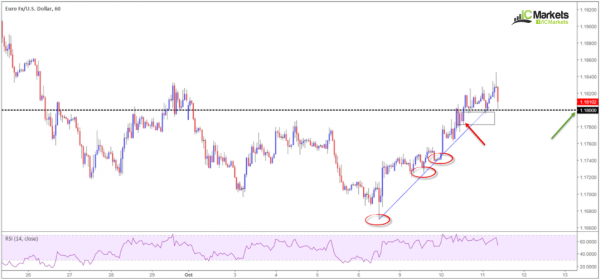Is spending countless hours at your trading desk the kind of freedom you had in mind when you first voyaged into the trading world?
If you are one of those unfortunate souls scrutinizing each pip movement with little to show for it, switching things up to the higher timeframes could be an option. Remember the old adage that ‘less is more’?
What can the higher timeframes offer you?
Some of the best traders in the world used the higher timeframes to profit from market movements. Nicolas Darvas earned millions of dollars placing trades after the market close. Ed Seykota produced incredible returns for decades using end-of-day data.
Less stressful
Rather than spending all of your waking hours observing the short-term gyrations of the market, trading the higher timeframes would be far less taxing. An hour in the morning and perhaps an hour in the evening to check any trades or alter any levels should be sufficient.
We find that most intraday traders are stressed due to the NEED to make money! Moving your trading up to the higher timeframes would allow one to keep their day job.
Helps avoid overtrading
Arguably the most common pitfall in this business is overtrading. Using the higher timeframes will help eliminate this, since you should have minimal interaction with the market.
Teaches patience
Trading the higher timeframes can sometimes require one to wait days, or even weeks, for a setup to appear on the radar. Having the patience to remain on the bench when there’s little going on is vital to a traders success, both in intraday and longer-term settings.
Lower timeframes are just noise?
There are plenty of traders that strictly follow the larger timeframes. Some also claim that lower-timeframe structure is nothing more than noise. While we understand and respect their opinion, we would have to humbly disagree.
Trading intraday timeframes as opposed to the higher timeframes requires a completely different mind-set. Traders using the higher timeframes have to adopt more of a longer-term view, similar to that of an investor. Intraday traders, however, typically look to be in and out of the market within the day, requiring more of a speculative mind-set.
Also noteworthy, entry is crucial on the lower timeframes, while on the higher timeframes entry is a little more flexible as you tend to have more space to work with.
The higher timeframes can also benefit intraday traders!
Here is an example on the AUS200 CFD chart. Ok, we know this is not an intraday view, but it serves well as an introductory case:
See how Aussie shares were recently confined to a four-month range on the daily timeframe. Just looking at this timeframe, one could conclude that there’s equal opportunity to trade both long and short here, right?
Reading the higher timeframes, nevertheless, allowed us to observe a monthly demand in play. In fact, the four-month daily consolidation formed around the top edge of the monthly demand! Knowing this, what direction would you think the market is likely to trade once the range has broken down? North!
This could just as easily have been the M15 chart forming a range around the top edge of a H1 demand or support, it’s all the same thing. Knowing where you are trading in the bigger picture will help avoid traps. For example, buying into a higher-timeframe supply (usually not visible on the lower timeframes) from a lower-timeframe support would likely force an unnecessary loss.
In closing…
To be frank, we do not personally place special value on any timeframe. We just know that a trading style has to fuse with one’s personality and lifestyle. For instance, trying to cram 4 hours of intraday trading spread between your lunch break, the train journey home and when you’re eating dinner is not ideal trading conditions. In this case, it would be far simpler to switch to the higher timeframes. If, however, you have reasonably stable financials, have free time and have more of a speculative mind-set, then intraday trading could be the path to take.















